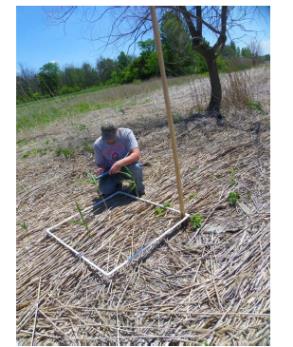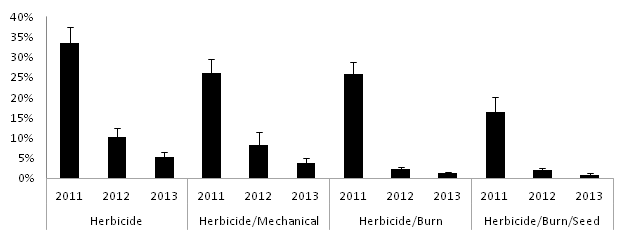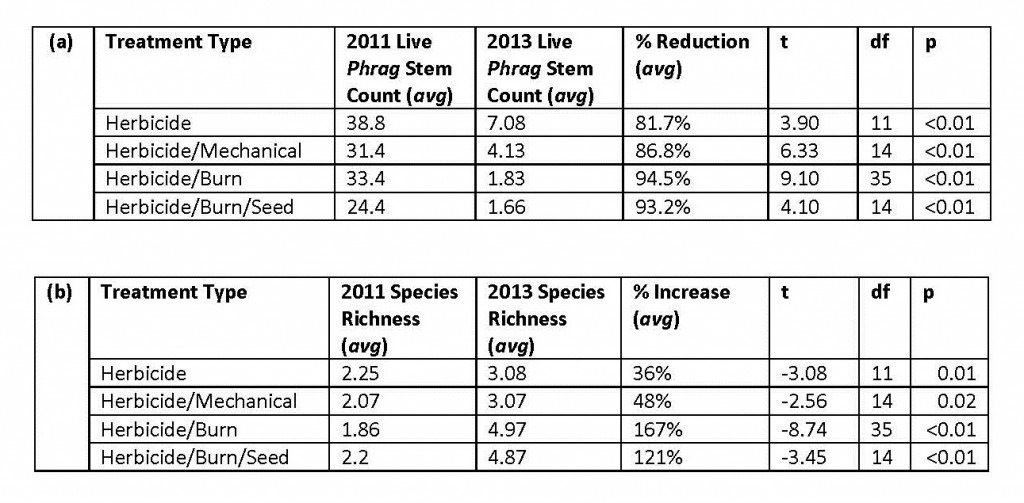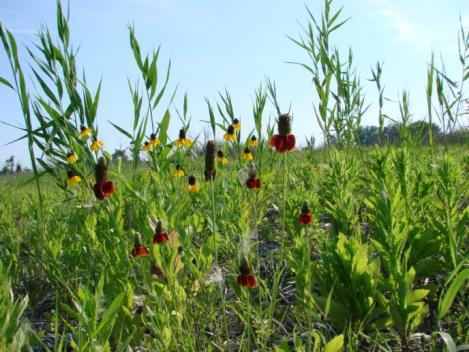Jennifer Thieme, Conservation Project Coordinator, The Nature Conservancy of Ohio
Chris May, Director of Stewardship, The Nature Conservancy of Michigan
Tara Baranowski, Lake Erie Coast and Islands Project Manager, The Nature Conservancy of Ohio
August, 2014
The Nature Conservancy and partners received financial support from the USFWS via the Great Lakes Restoration Initiative to manage and monitor Phragmites on 2,000 acres from 2011 through 2013. The Lake Erie Cooperative Weed Management Area (LECWMA) identified parcels for treatment using staff knowledge, aerial photographs, helicopter surveys, and private landowner outreach. LECWMA treated large stands of Phragmites using combinations of aerial and ground herbicide application, mowing, mechanical crushing, prescribed fire, and reseeding with native seed. Monitoring the response of Phragmites and native vegetation was an important component of this project.
To monitor efficacy of treatments, we arranged 78 treatment plots in a randomized complete block design on a portion of the project area. Linear stands of Phragmites along the shoreline served as blocks, each with a discrete hydrologic component (wet versus dry). We divided each block into four permanent plots. Each plot received an initial herbicide treatment followed by one of the following: (1) follow-up herbicide, (2) mechanical crushing + follow-up herbicide, (3) prescribed fire, or (4) prescribed fire + native reseeding.
We gathered data on initial Phragmites density, density reduction, percent Phragmites cover, and diversity of vegetation regrowth from 2011 through 2013. All treatment types showed a significant reduction in percent cover and density of Phragmites through the project period (Figure 1).
Plots receiving a “fire” treatment (Herbicide/Burn or Herbicide/Burn/Seed) showed significantly lower percent cover of Phragmites and lower Phragmites stem density than treatments that did not incorporate fire (Table 1a).
At the end of all treatments, density of Phragmites stems did not differ between wet and dry plots within any treatment type.
Species richness increased by at least 36% on each treatment type, with “fire” treatments showing significantly greater increases in species richness than “non-fire” treatments (Table 1b). Species richness did not differ between Herbicide/Burn and Herbicide/Burn/Seed treatments at the end of 2013.
Given these results, we recommend that initial herbicide treatment be following up with prescribed fire to remove dead thatch and expose seed bank for regrowth. Follow-up treatments incorporating fire are most likely to result in lower Phragmites cover, lower Phragmites density, and higher species richness than those without fire.
Both Herbicide/Burn and Herbicide/Burn/Reseed treatments showed similar increases in species richness. This was not surprising given that our seed mix reflected native regrowth observed on areas treated in 2009 and 2010. Supplemental seed was intended to aid native plants in establishing greater coverage more quickly. However, we found no support that the supplemental seed led to increased cover of native plants within the first three years of treatment. Therefore, we do not recommend reseeding as a major component of future Phragmites removal efforts in the Western Lake Erie Basin unless the intent is to enhance the area with species that are absent from the seed bank, or unless continued monitoring efforts reveal benefits after the initial three-year period. This study will continue through 2014 and new data will be incorporated into results.




